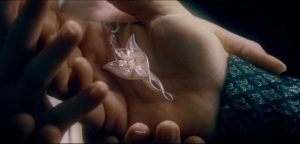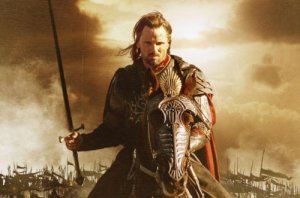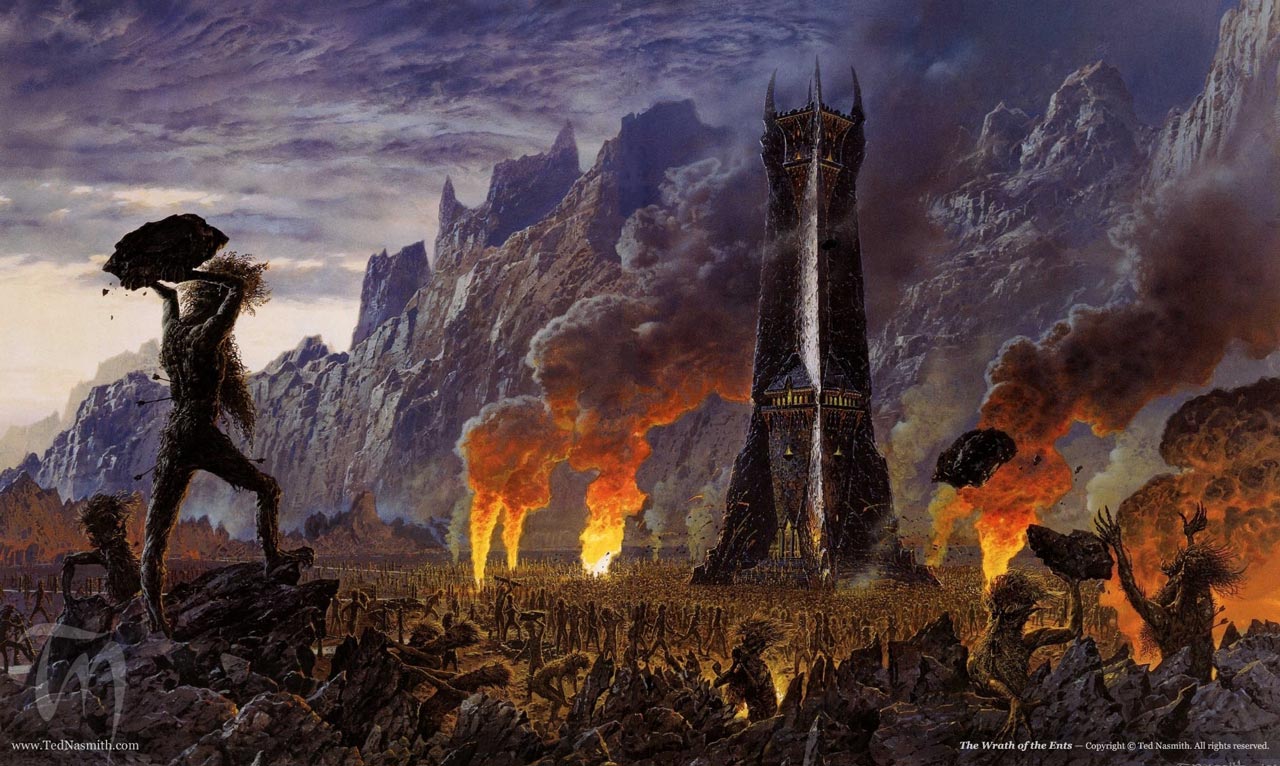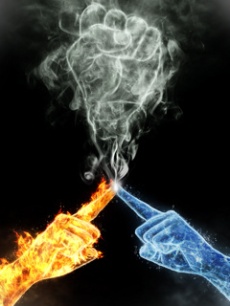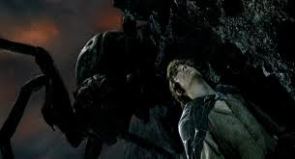This entry I am using as a workshop for a few ideas for a much larger research paper. Comments and questions are welcomed and encouraged. Please discuss the material with me if it at all interests you.
There are three main ways by which The Lord of the Rings films have been altered from the novels to be more suitable for an American audience. Janet B. Croft’s study of the films as they relate to the American superhero monomyth outline these aspects as sexual renunciation, distrust in established democratic institutions, and systematic diminishment. Her study focuses primarily on Jackson’s Americanized interpretation of the hero Aragorn.
Sexual renunciation is a phrase for the common theme of rejecting sexual and romantic entanglements for the sake of the quest the hero must complete. This plot line is seen again and again in famous superheroes. For example, Bruce Wayne must set aside his desire for a relationship with Rachel until such a time as Batman is no longer needed in Gotham. Peter Jackson uses this same story line by placing even more emphasis on the Arwen and Aragorn romance than there was in the original narrative. By introducing the audience to their love affair at an earlier point, Jackson is able to argue that Arwen is a distraction for Aragorn from his heroic duties and that is why, by his interpretation, she is left behind in Rivendell.
Distrust for the established democratic system is a recurring theme in American literature and movies. Portraying the government as corrupt allows the hero the privilege of rejecting those in charge in order to do what is right in the end. Basically, it grants lenience for the justification for vigilantism. All superheroes take the law into their own hands. Jackson’s Aragorn is portrayed as a lone Ranger for much longer in the film than in the novels. His transformation from Ranger to King in the books is much more gradual. Instead of stepping into his rightful place as King, Jackson’s Aragorn seems to take this right in the end of the third film.
Authors and filmmakers also tend to systematically diminish their heroes to make them more relatable to an imperfect American public. Lowering heroes from god-like status and forcing them to embrace human weaknesses like love and despair makes characters much more acceptable by the judgment of general society. It is hard for anyone to truly accept the gods of Greek and Roman legends as real. However, normal human beings with advanced qualities of courage or brilliant stokes of luck that grant them special powers are a bit more believable. It is easier to believe in the mutation caused by a bite from a spider than in a supernatural being that can control the power of the ocean. Aragorn is humanized by the emphasis on his romantic, rather than epic, character. In order to both diminish Aragorn and make him the prime hero, Jackson also systematically diminishes other characters and storylines. All of the hobbits’ heroic qualities are diminished in the films to make way for Aragorn.
In the end, the changes made to literature narratives in Hollywood are not solely the will of the producers. The American public must be delivered what the American public desires or movies would not make money. The medium of film requires filmmakers to embrace certain motifs like the ones outlined above.


